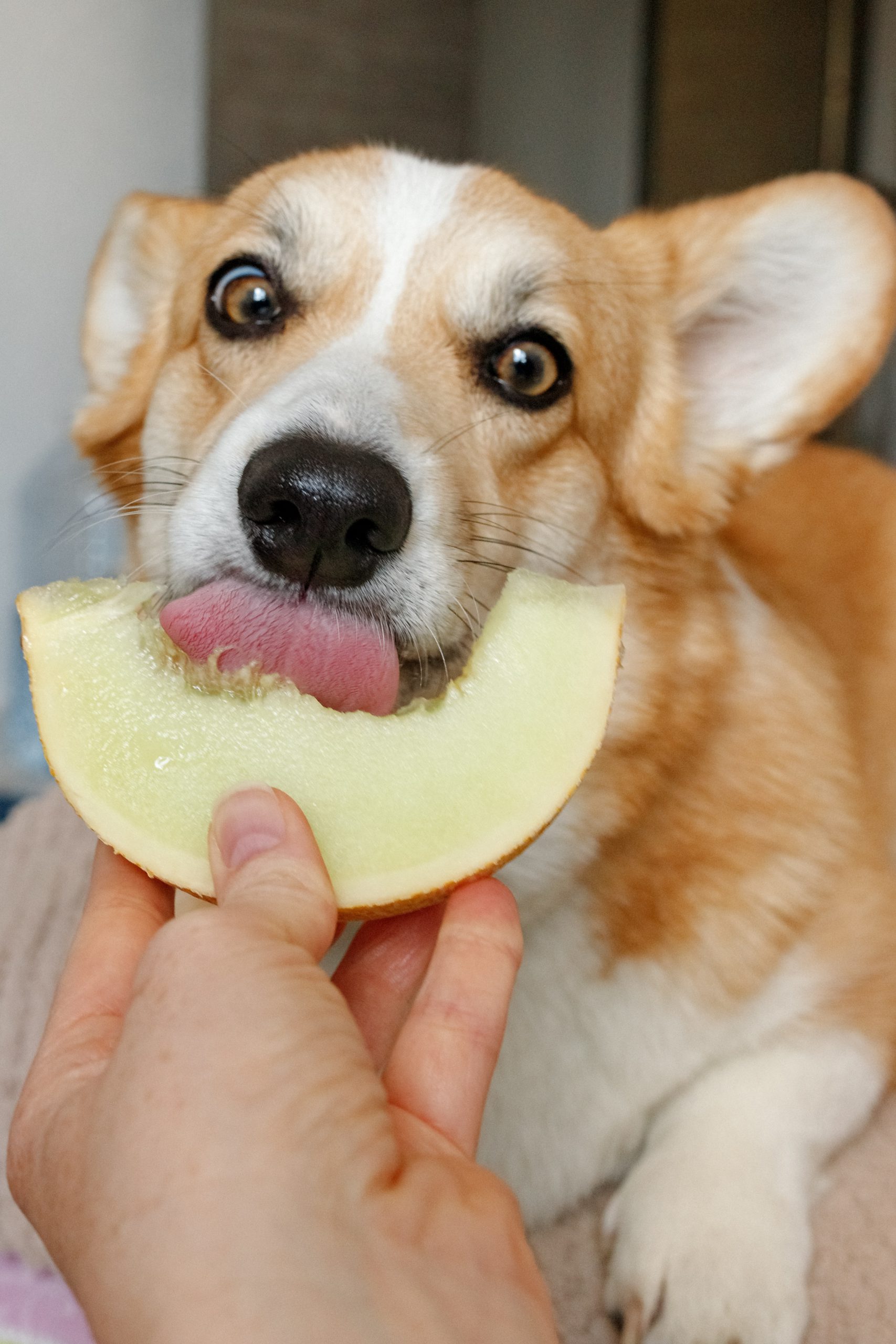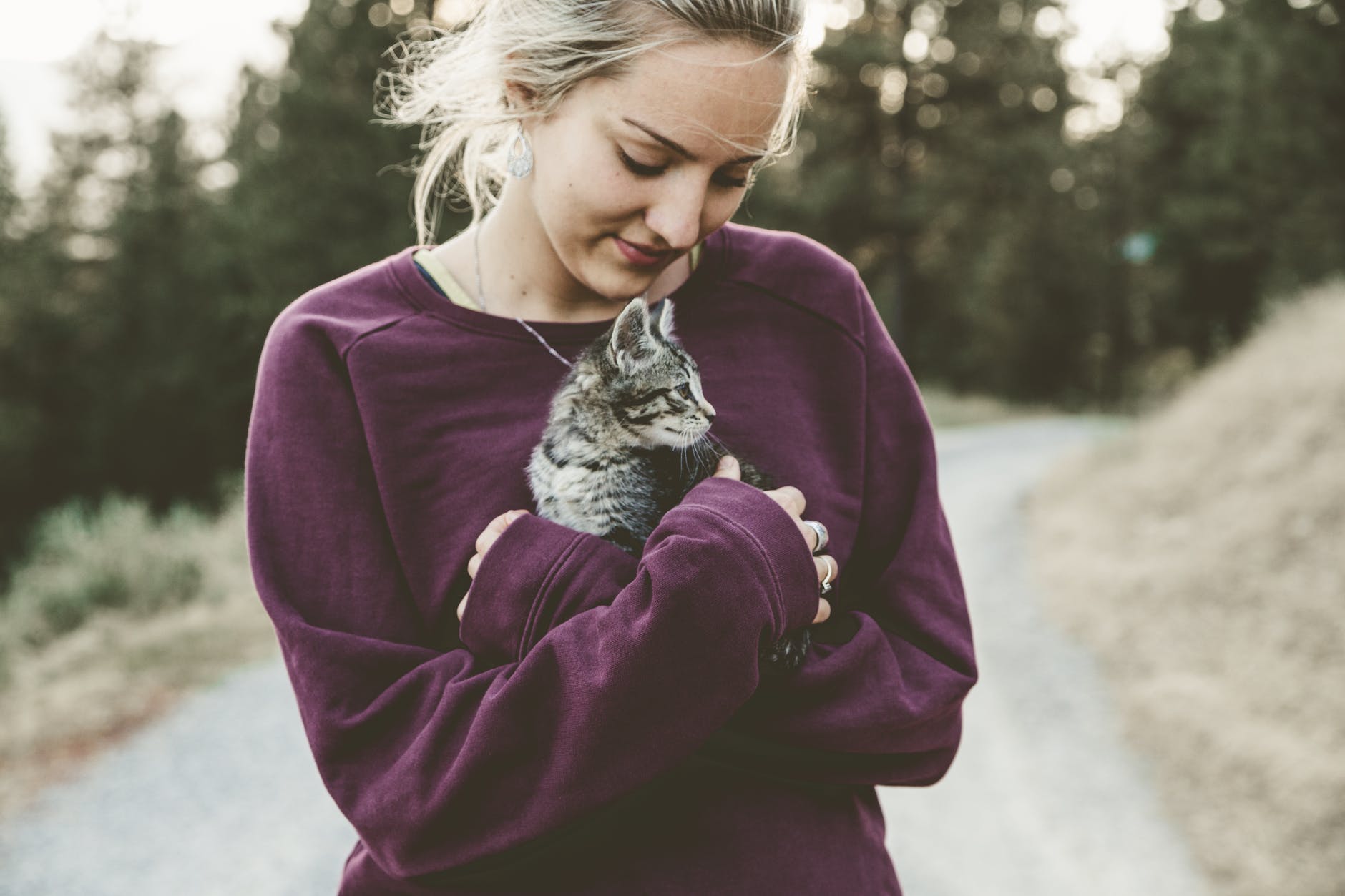Who doesn’t love to share snacks with their friends? Yes, even your pets enjoy a refreshing treat. But is it safe for a dog and cats? Can they enjoy vegetables and fruit from time to time? Let’s take a look
The simple answer is yes, both a dog and cats can have vegetables and fruit added to their diet. With the exception of all types of onions, garlic, grapes (raisins), and avocados and cherries (the pit contains traces of cyanide). Make sure to remove any thick skin which can be hard to digest or a choking hazard. Certain seeds can be harmful or poisonous if not removed.
A certain Golden-Doodle who I live with has a sensitive stomach. She has changed the way I think about feeding dogs. She eats high-quality kibble, and some wet food, additionally, she gets high-quality organic chicken breast as well. It was Vet approved and recommended after some scary tummy troubles/weight loss earlier this year. Turns out we can add some more greens and fruit to her bowl if we want…….er if SHE wants…. She gets what she needs mainly from the dry food and the extra protein, they make a balanced diet already.
But I have also learned a lot about other foods are o.k. A healthy variety of human food choices are good to share with your pet too! There are many human foods especially fruits and veggies, that can be given to your pet. I enjoy sharing treats with fuzzy loved ones.
There are hidden benefits for your pets too!
In addition the extra vitamins and anti-inflammatory qualities of some veggies are great for older pets to keep them healthy and mobile. For instance, a little cooked butternut squash added to your pet’s bowl adds as much potassium as a banana and can help relieve diarrhea and constipation.
“Fortunately, there are many whole food options that can ease arthritis pain when fed regularly to your pet. These include celery, alfalfa, ginger, mango, papaya, blueberries, and kale, among others. “
Stem Cell Vet
As far as Pizza my cat is concerned….he the little quintessential stinker with the paw that swipes. He is not particularly fond of fish, but he has been known to have some lettuce or leftover pasta. Although he much prefers his wet food to dry kibble these days, he is a senior so I indulge him when I can. He is still fairly svelt for a 10-year-old cat with a sophisticated palate.
What Vegetables and Fruits can I share with my dog or cat?
As long as your pet doesn’t show any allergic reactions to foods, feel free to share the following food/treats with them. It is best to try a small amount first to rule out any problems like stomach upset or diarrhea. It is good to know that dogs are omnivores and enjoy a varied diet of both meat and vegetables, while Cats are obligate carnivores and a majority of their diet comes from meat. They can still enjoy a non-meat snack every now and then. Pizza is always magically around when he hears me munching. If I’m eating it, it must be good.

Remember up to 15% of your pet’s diet can be made up of fruits and vegetables from these handy lists.
Fruits that are dog and cat friendly
Unlike cats, dogs have developed a sweet tooth over time. An occasional piece of fruit would make an interesting treat to share. It is best to share a peeled seeded piece. Thick skin or seeds of the fruit can cause tummy troubles, and seeds of many fruits can be deadly in large amounts. Fruits offer a long list of vitamins and nutrients that are great for dogs. One a hot summer day a cold bowl or cut up cucumber and watermelon can keep your pooch hydrated and happy. Some dogs even appreciate frozen fruit, while lounging in the shade.
- Apples
- Bananas
- Blueberries
- Cantaloupe
- Cranberries
- Cucumbers
- Oranges
- Mango
- Peaches
- Pear
- Pineapple
- Watermelon (without the rind or seeds)

Vegetables your dog and cats can have and enjoy.
Although almost all of these can be shared raw, a quick blanch in boiling water makes it easier for your dog or cat to consume. Cooking breaks down the cell walls and makes it easier to digest and receive all the nutrients available.
- Broccoli
- Brussel Sprouts
- Butternut squash
- Carrots
- Cauliflower
- Celery
- Green Beans
- Lettuce
- Peas
- Spinach ( in small amounts)
****Never feed list****
This list is EQUALLY IMPORTANT.. IF NOT MORE IMPORTANT
A seemly harmless fruit like a grape can cause acute sudden kidney failure. Anything in the onion family can cause your dog’s or cats red blood cells to rupture, and can also cause vomiting, diarrhea, stomach pain, and nausea. Yikes! That includes chives, green onions, and leeks as well.
- Grapes (or Raisins)
- Avocado
- Onion
- Garlic
- Cherries
Fruit pits are the pits! cherries, peaches have cyanide and can cause issues. Apple seeds are also rich in cyanide as well and need to be avoided.
Overly fibrous vegetables like Asparagus, or beets can cause intestinal distress or blockages, or become a choking hazard. Although they aren’t poisonous, it is better to avoid hard to chew options, especially if your pet is older, with sensitive (or fewer) teeth.
Obviously it is prudent to know what you are giving your pet.
Yin Yang Nutrition for dogs Maximizing Health with Whole Foods, Not Drugs
What is for your pet’s dinner?
Remember treats are fun to share. I personally am a snacker, especially when I am writing. You can bet while at the computer I am also surrounded by the animals of the household. (I think my snacking has made me very popular) But remember 75-85% of a dog or cat diet should be meat-based. They are omnivores. A few treats here and there are good. Vegetables and fruit can provide low calories vitamin-packed hydrating snacks for a dog and cats. A few extra vegetables are a good treat if your pet is a little chonky and needs to slim down. Vegetables can keep your pet pals feeling fuller for longer, just like they do for us, humans. Hopefully, you can add some dog and cats can have vegetables and fruit your pet on your next grocery list and enjoy a little snacking together.
This site contains affiliate links to products. We may receive a commission for purchases made through these links.






